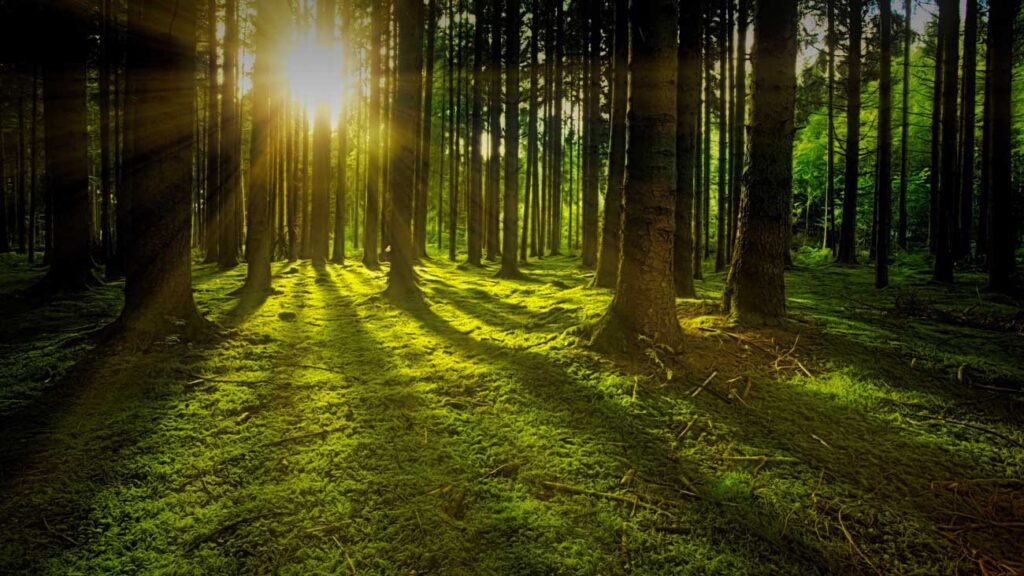The forest is a prime example of Darwin’s principle of survival of the fittest, with limited resources forcing competition for food, water, and territory. Camouflage and defensive capabilities are common adaptations in the forest, while biodiversity plays a critical role in its survival. Human activities are putting pressure on forest ecosystems, threatening biodiversity. Protection of biodiversity, sustainable use of resources, and effective conservation strategies are needed for the survival of the forest ecosystem, which is essential for sustaining life on our planet. Acknowledging the value of forests is crucial for their continued existence.
Survival of the Fittest in The Forest
Forests are some of the most diverse ecosystems in the world, with a wide range of flora and fauna living in them. However, survival in the forest is not easy for any living organism. With limited resources, competition for food, water, and territory is fierce. The forest is a prime example of the Darwinian principle of survival of the fittest.
The Struggle for Food
Food is scarce in the forest, and many animals often have to travel long distances to find it. For predators, the hunt for food is a daily struggle. They have to be quick and agile to catch their prey. Herbivores, on the other hand, have to be constantly alert to avoid becoming prey themselves. Their survival depends on their ability to detect danger and quickly escape it.
The competition for food is not just limited to animals. Plants also have to compete for resources. They have to battle for sunlight, nutrients, and water. Trees, for example, have to grow tall to reach sunlight, and they have to have deep roots to access water and nutrients. The larger trees usually win the competition, leaving the smaller plants struggling to survive.
Adaptations for Survival
To survive in the forest, organisms have to adapt to their environment. They have to evolve traits that give them an edge over their competitors. Natural selection favors the organisms that have the most advantageous traits for their environment.
One of the most common adaptations in the forest is camouflage. Many predators are adept at blending into their surroundings to remain hidden from their prey. For example, the leopard’s spotted fur helps it blend in with the dappled light of the forest canopy. Some prey animals also use camouflage to avoid predators. The stick insect, for example, resembles a twig, making it hard to spot in the forest undergrowth.
Another common adaptation is defensive capabilities. Animals in the forest have to defend themselves from predators, and the ones that are most successful at it are the ones that survive. For example, the porcupine is covered in sharp quills that deter predators from attacking it. The skunk, on the other hand, releases a noxious odour to repel predators.
The Role of Biodiversity
Biodiversity plays a critical role in the survival of the forest ecosystem. A diverse range of species means that there are more opportunities for survival. For example, if one species is not able to find enough food or water, another species may be able to thrive in those conditions. Biodiversity also helps to maintain the balance of the ecosystem. If one species becomes too abundant, it can upset the delicate balance of the ecosystem and cause problems for other species.
However, biodiversity is under threat in many forests around the world. Human activities such as deforestation, hunting, and pollution are putting pressure on forest ecosystems, leading to a decline in biodiversity. This makes it even harder for organisms in the forest to survive.
The Future of the Forest
The survival of the forest ecosystem is dependent on various factors, including the protection of biodiversity, sustainable use of resources, and effective conservation strategies. Governments and organizations worldwide are taking steps to protect forests and the biodiversity they support. These include designating protected areas, implementing sustainable forestry practices, and encouraging reforestation and afforestation efforts.
However, more needs to be done to ensure the survival of the forest ecosystem. It is essential to acknowledge the value of forests and the vital role they play in sustaining life on our planet. Without the forest, the survival of many species, including humans, would be in jeopardy.
Conclusion
The forest is a complex ecosystem with a myriad of interactions between its inhabitants. Survival in the forest is a constant battle for all living organisms, requiring the evolution of advantageous traits and adaptions. The future of the forest depends on our ability to protect its biodiversity and ensure its continued existence for generations to come.
